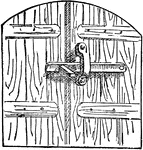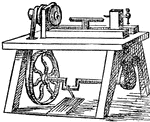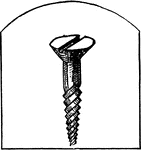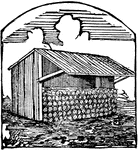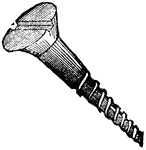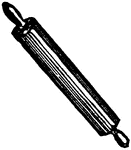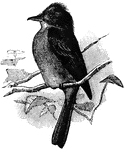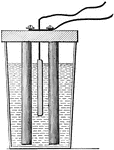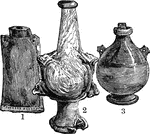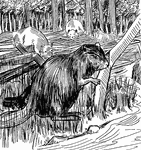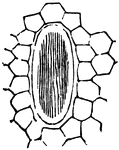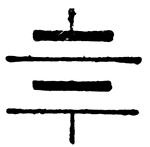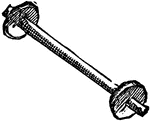
Bobbin
A small cylindrical piece of wood or metal with a border at one or both ends, on which thread is wound;…
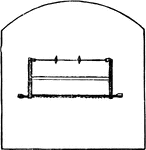
Bow-saw
A saw with a narrow blade set in a strong frame, and used for cutting curved forms from wood.
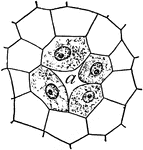
Resin gland of a fir
"Young resin gland of fir: a, duct, an intercellular space formed by the separation of the…
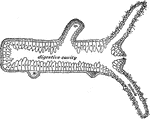
Section of a hydra
"Longitudinal section of a Hydra; b, bud which will form a young one; ba, base by…
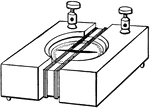
Galvanoscope
"Secure the two ends of the wire by double-pointed tacks. Place a small pocket compass upon the block…

Voltaic cell
"Just as a head of water supplies a hydraulic pressure that causes the liquid to flow through a pipe…

Wood Engraving
"The wood used for engraving is boxwood, nearly all of which is imported from Turkey." —The Popular…
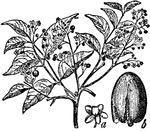
Mahogany
A large tree of the order meliaceae, common to tropical America, and noted for its close-grained and…

Tree Design
Sometimes called the tree of life. Always associated with religious belief. It symbolizes Divine power…
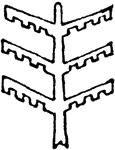
Tree Design
Sometimes called the tree of life. Always associated with religious belief. It symbolizes Divine power…
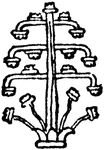
Tree Design
Sometimes called the tree of life. Always associated with religious belief. It symbolizes Divine power…
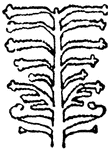
Tree Design
Sometimes called the tree of life. Always associated with religious belief. It symbolizes Divine power…
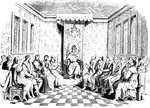
Edward VI
"Edward VI, and his Council. From a wood-cut on the title-page of 'Acts of Parliament," A.D. 1551."…
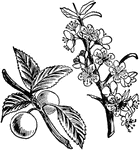
Sloe
A shrub of the plum family, usually frowing to a height of from six to twelve feet. Its wood is hard…
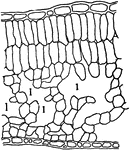
Apple Leaf
A magnified portion of an apple leaf. It shows many small sacks grown together. Each of these sacks…
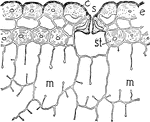
Pine Leaf
This image shows the cross-section of the outer cells of a leaf of pine. S, stoma; E, epidermis; C,…
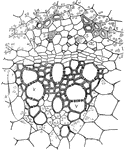
Vascular Bundle
This illustration shows a vascular bundle enlarged: x, xylem; v, vessels or ducts; p, phloem; s, sieve…

Ricciocarpus
This illustration shows the structure of the thallus of Ricciocarpus: A, section of the thallus, showing…
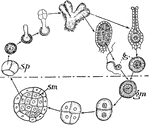
Ricciocarpus
This illustration shows a diagram of the life history of Ricciocarpus. The upper portion of the figure…
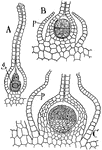
Gametospore
This illustration shows the germination of the gametospore: A, section of a mature archegonium with…
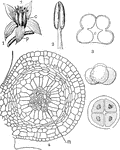
Angiosperm
This illustration shows the flower and sporophylls of Angiosperms: 1, flower of Sedum with leaf-like…

Lepidium
This illustration shows stages in the germination of the gametospore of Lepidium, sectional view: A,…

Muscular Tissue
This illustration shows a diagram of nervous and cross-striate muscular tissue, showing the mode of…

Turbellarian
This is a diagram of transverse section of a Turbellarian through the region of the mouth. d.m., dermo-muscular…

Pipe Organ
This image shows an ancient pipe organ. A pipe organ is a keyboard instrument that makes its sound by…
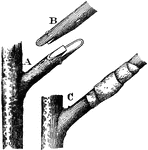
Tongue Grafting
To graft two plants together using the tongue or whip grafting approach, you must first make a sloping…

Tilted Strata
This illustration shows a rock formation that has a tilted strata. a b c d represents a square block…

String Toy
A toy consisting of a hollow and well balanced piece of wood turned in the shape of an hour glass. It…
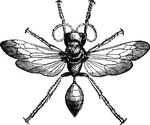
Digger Wasp
A popular name for wasps that burrow in the ground, in which th lay their eggs, provisioning each cell…
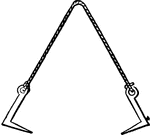
Sling Dogs
A sort of iron hook or bar, with one or more sharp fangs or claws at one end, which may be fastened…
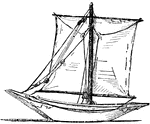
Doonga
A canoe made out of a single piece of wood and carrying a square sail, employed for navigating the marshes…

Protoplasm
The circulation of protoplasm (p) in a cell of the stamen-hair of Tradescania. In the channels the granules…
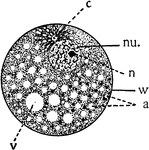
Cell
Diagram showing the principal parts of the cell and something of the protoplasmic architecture as it…
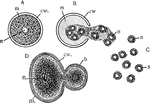
Cell Reproduction
Modes of cell reproduction. A, B, and C, stages in the reproduction of the Infusorian, Colpoda, by the…
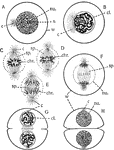
Mitotic Division
"Indirect or mitotic division; A, resting mother nucleus; B, coil stage, with the centrosomes separating;…

Blood Corpuscles
"Blood corpuscles (human). c, colored; l, leucocytes. The red cells tend to collect in rows with the…
